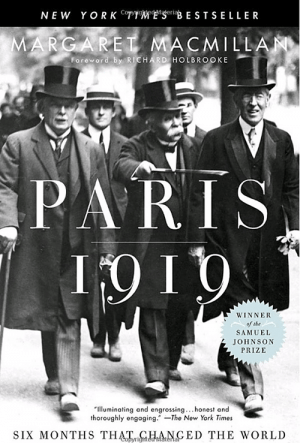 Paris 1919: Six Months That Changed the World | Book by Margaret MacMillan
Paris 1919: Six Months That Changed the World | Book by Margaret MacMillan
In the months following World War 1, the victorious Allied Powers sliced, shifted and (in some cases) created the boundaries of Europe, Africa, the Middle East and East Asia. They heard the competing claims of hundreds of groups from dozens of countries, weighing up the various options and ultimately shaping the future of a large part of the world.
Paris 1919 tells the story of those months of negotiation. Margaret Macmillan presents not only the events, but also the personalities — the idealism of President Wilson, the gruff realism of France’s Clemenceau. Each of the many arguments and competing claims is painted in vivid colours.
Many of the decisions made in the negotiations were momentous — countries were created or resurrected after disappearing centuries before. These decisions set in motion events that, to some extent, led to World War 2. Many of the decisions made continue to cause conflict today (those made Middle East in the particular).
If you’re looking to understand world politics or current conflicts, you’ll find yourself regularly returning to these settlements. If you understand the decisions that were made in Paris, you’ll better understand our current state of affairs.
If you’re a traveller, this knowledge will give you some amazing context for how different countries feel towards each other and why certain areas feel the way they do. It’ll also be a BIG help with your geography — once you’ve read a few times about Greece and Albania arguing over borders, you’ll probably remember where those borders are.
More like this: Did you know that three of the monarchs in power at the start of World War 1 were related?
